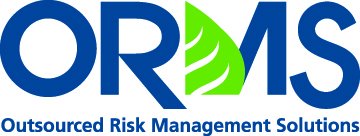How Will the PFAS Action Act of 2021 Impact Lenders?
How Will the PFAS Action Act of 2021 Impact Lenders?
The days of “forever chemicals” may be numbered.
On July 21, 2021, the U.S. House of Representatives passed H.R. 2467, the PFAS Action Act of 2021. Although the bill’s fate in the Senate is uncertain (according to an analysis by Skopos Labs, the bill has a 41% chance of passage in the upper chamber), it represents the most recent salvo in environmental advocates’ long-term fight to get these controversial chemicals removed from the country’s drinking water and food supplies.
What are PFAS?
Often referred to as “forever chemicals” due to their resistance to environmental degradation as well a tendency to accumulate in the bodies of wildlife, fish and humans, PFAS and related substances have a lengthy and colorful history.
Originally discovered in the 1930s by industrial giants Dupont and 3M, polyfluoroalkyl substances (PFAS) were found to have remarkable stain-, water- and oil-resistant properties. Specific formulations such as PFOA and PFOS were branded as TeflonTM, ScotchgardTM, STAINMASTER® and other household names, PFAS chemicals found a wide range of uses in consumer and industrial applications, including non-stick cookware, stain protection for fabrics, fire-fighting foam and car wash solutions.
Unfortunately, PFAS have over time been linked to a host of health concerns including high cholesterol, lower immune systems, liver damage, infertility, hypertension, cancer and thyroid disease. Researchers are concerned by the presence of PFAS in consumer products, as a 2021 study found PFAS in 100% of breast milk samples tested.
Although banned from production in the U.S. since 2015, PFAS can still be found in many products, and contamination is an ongoing concern. A rash of industrial accidents in recent years, such as the June 2019 malfunction of a fire suppression system at Connecticut’s Bradley Airport that released 20,000 gallons of firefighting foam into the Farmington River, have led to increased calls for federal and state regulation of these dangerous chemicals.
What will the proposed regulation do?
The stated purpose of H.R. 2467 is “to require the Administrator of the Environmental Protection Agency to designate per- and polyfluoroalkyl substances as hazardous substances under the Comprehensive Environmental Response, Compensation, and Liability Act of 1980 [‘CERCLA’].”
Among its many provisions, the bill would direct the EPA to establish a national drinking water standard for PFOA and PFOS within two years, designate PFOA and PFOS chemicals as hazardous substances under CERCLA within one year and determine whether to list other PFAS within five years. It would also direct the EPA to designate PFOA and PFOS as hazardous air pollutants within 180 days and require the agency to determine whether to list other PFAS within five years. Furthermore, the EPA would be required to establish discharge limits on industrial releases of PFAS along with comprehensive PFAS health testing programs.
Although ultimate passage of the PFAS Action Act 2021 is unlikely, the fact that the bill has made it this far in Congress should ring alarm bells for commercial property owners and lenders. Numerous states including MA, MI, NH, NJ, NY, and VT have already established maximum contamination levels for PFAS in drinking water. Action by the EPA is surely coming and is likely to mirror many of the most aggressive laws already on the books at the state level.
What should lenders do to prepare?
PFAS contamination represents a rapidly evolving area of environmental risk. Commercial real estate lenders should watch regulatory and legislative developments closely, and make sure to keep PFAS on their radar screens for all new and existing deals. Specifically, we recommend taking the following steps:
- Know the regulations: As PFAS regulations are in a state of flux, make sure you understand all requirements in your jurisdiction, and keep an eye on changes to local, state and federal environmental laws related to PFAS and water contamination.
- Consider obtaining specialized insurance coverage: Depending on the situation, obtainingSecured Creditor Environmental Insurance may be advisable. Such policies are designed to cover the lesser of the outstanding loan balance or cost of remediation, and/or protect against third-party claims of damage in the event of both loan default and property contamination.
- Consider requiring environmental indemnification: Another way to hedge against possible liability if the property is considered high risk for contamination is by including an Environmental Indemnification clause in your loan closing documents. Consult with an experienced real estate attorney to craft appropriate language to best protect your interests as the lender.
- Avoid taking over management of the collateral: Under CERCLA, secured creditor liability is triggered generally by an event of default, and when the lender takes over active management of the property, either during the term of the loan or following foreclosure. As the lender, it is best to put the onus on the borrower to show full compliance with environmental compliance, rather than getting deep into the day to day operations.
- Conduct environmental due diligence: It goes without saying, but as the lender you are responsible for ensuring a comprehensive, independent environmental review is performed on all real estate collateral before closing on the deal. The level of review varies based on the type of collateral, size of the loan and associated risks, but make sure that all required PFAS contamination assessments are included. And don’t hesitate to consult with an experienced environmental risk management firm to determine the appropriate types of testing to perform.
To ensure compliance and avoid the stain and expense of a major environmental contamination incident related to PFAS, make sure your risk management program is like Scotchgard. For more information, reach out to your risk management experts at ORMS at info@orms.com.
